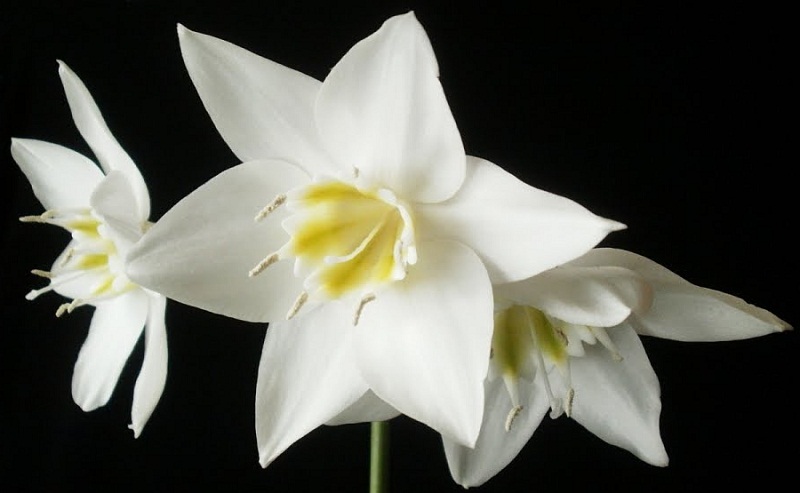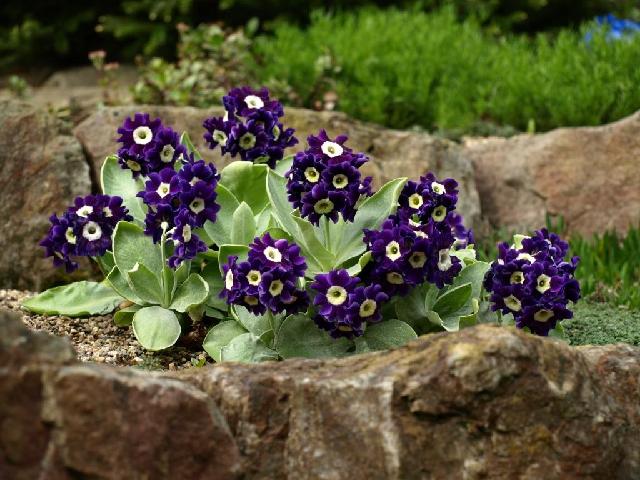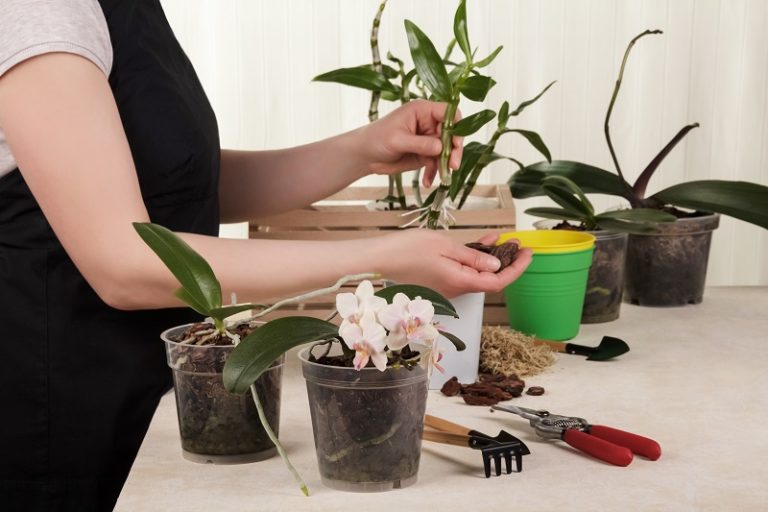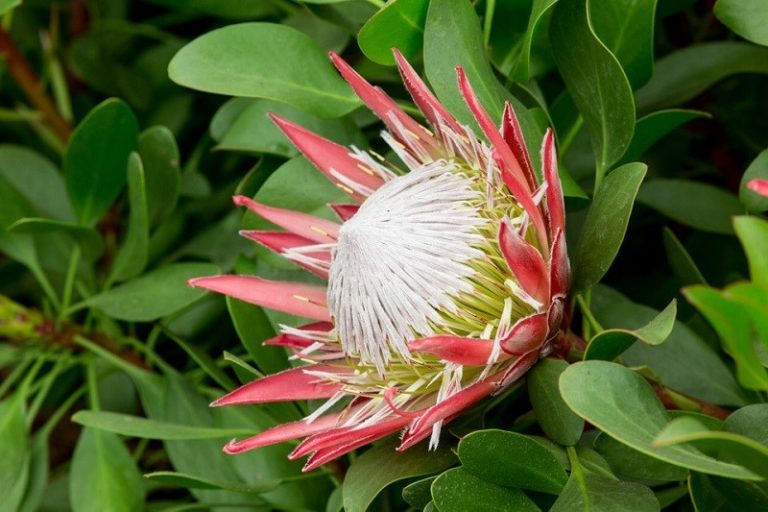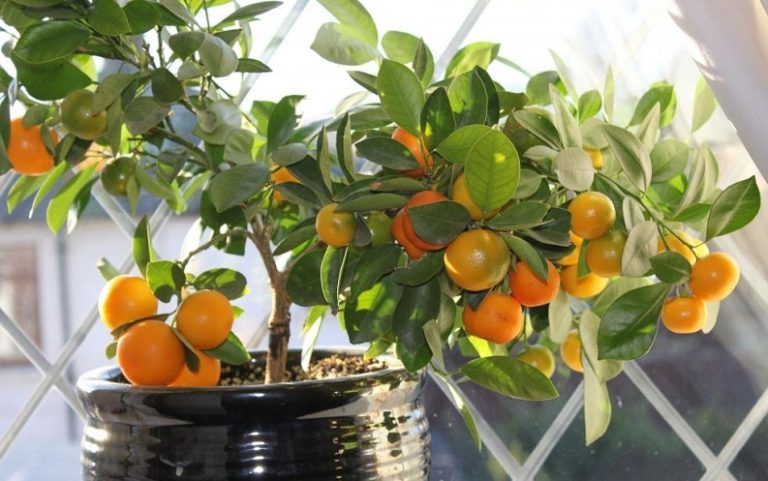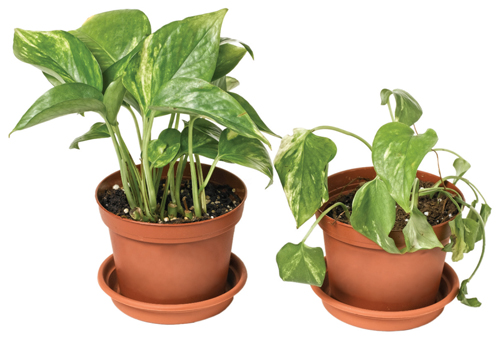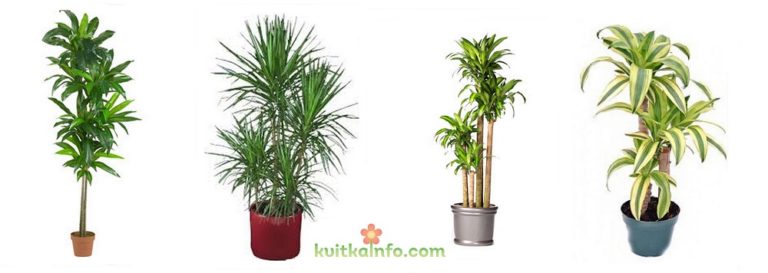Eucharis: care
Eucharis (Eucharis) is an ornamental bulbous plant that blooms in winter with unusual graceful white flowers with a delicate pleasant aroma, belongs to the genus Amaryllis. The leaves of eucharis are large (up to 40 cm long and up to 20 cm wide), dark green, broadly oval, pointed at the tip, growing on long leaf petioles, the leaf plate has a shine. The leaves do not dry out after flowering, they remain so for quite a long time (several years), but after flowering, the leaves may die off. The flowers of eucharis are large, up to 10 cm in diameter, similar to a daffodil, snow-white, collected in inflorescences, the peduncle is up to 70 cm long in height. In the middle of the flower, a dense greenish crown with teeth along the edge stands out. In its natural environment, eucharis can be found in the rainforests of the South. America.
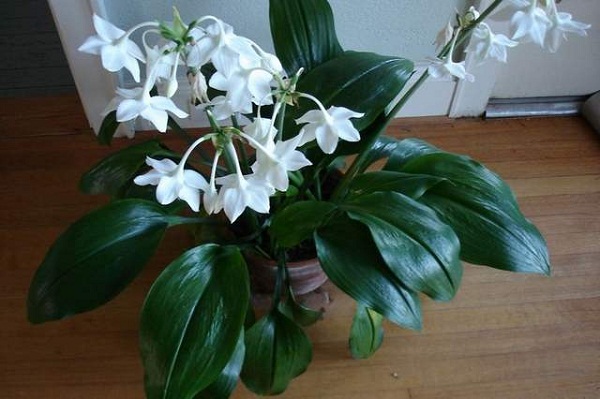
Eucharis has more than 20 species, but we most often meet Eucharis grandiflora , which has large flowers, and Eucharis amazonisa – an Amazonian lily.
Eucharis can bloom twice a year, but this happens in professional flower growers. For the first time they bloom in autumn or on New Year’s Eve, gives up to 8 pedicels, the second time flowering is poorer, only up to 3 pedicels, blooms in early summer
Eucharis can be grown as an ornamental deciduous plant during the dormant period, and during flowering it can be placed in the most prominent place in the room and enjoy its beauty.
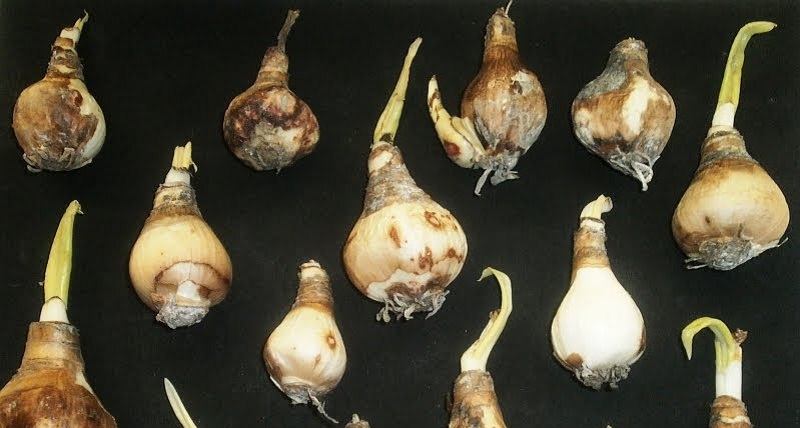
How to care for eucharis
Caring for eucharis is not difficult if you follow the care recommendations.
Brightness of light for eucharis
Eucharis can grow in shady places, but still prefers light, not direct sunlight. In summer, eucharis can be taken out to the terrace or yard in shaded places. With insufficient lighting, the leaves of euzaris will be elongated (stretch towards the light) and break under their own weight, in which case the plant will lose its decorative effect.
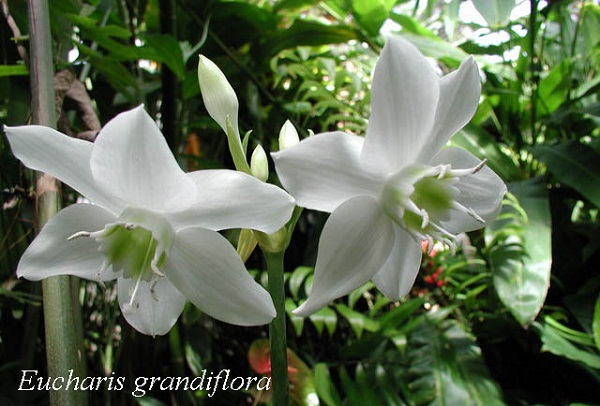
Air temperature for eucharis
Eucharis loves warmth. During the period of active growth (spring-autumn), the air temperature should be above +18°C, and in winter not lower than +14°C. At lower temperatures, the plant may freeze and fall off all the leaves, and the bulb will begin to rot. With sudden changes in temperature, the flowers of the eucharis will become smaller.
Watering eucharis
Eucharis should be watered moderately, as the top layer of the earthen coma dries up. The earthen clod should neither dry out nor be too wet . When the soil is completely dry, the roots begin to wither. And when the soil is waterlogged, the process of rotting of the roots and bulbs begins. Use soft, room temperature water for irrigation. During dormancy, eucharis is watered when the soil in the pot has dried out to half its height. At the same time, the amount of water for irrigation should be very small, so that the soil does not dry out, but does not become too wet.

Air humidity for eucharis
Eucharis does not need high humidity, but during the growing season (active leaf growth, flowering period), the plant responds positively to spraying (1 time per day). When spraying, try not to let water droplets fall on the flowers. Eucharis leaves are large and dust collects on them, wipe the leaves with a damp cloth from time to time, or wash them in the shower so that water does not get into the soil.
Fertilizer for eucharis
During the growing season, eucharis needs to be fed 1 time in two weeks with complex mineral fertilizers for flowering plants, organic fertilizers are also suitable, they need to be alternated. Eucharis responds positively to foliar feeding. After flowering, feeding the eucharis is stopped for a while.
Watch the video about indoor violet. Violet flowers are multi-colored, simple, double, wavy with a diameter of 2 to 4 cm.
Transplanting and soil for eucharis
Eucharis does not like transplanting, so it is transplanted as needed about once every 4 years, by transshipment. Eucharis should be transplanted in the spring. Choose a pot for transplanting tall and narrow because eucharis blooms more profusely, provided that it is cramped in a pot. At the bottom of the pot you need to pour a layer of drainage, and do not forget to make drain holes. After transplanting, the plant is watered very carefully for the first few weeks when the topsoil dries up. In order for eucharis to be accepted after transplantation, it must be sprayed regularly. A sign of plant acceptance is the appearance of new leaves.
The composition of the soil for eucharis should include leafy, soddy soil, compost and sand (2:2:1:1), and soil for flowering plants is also suitable.
Reproduction of eucharis
Eucharis propagates by bulbous babies during transplantation and seeds. Eucharis, when propagated by children, blooms for 3 years, and when propagated by seeds, it will bloom for 4-5 years.
Diseases and pests
Eucharis can be attacked by scale insects and aphids.
Diseases occur with improper care.
The biggest mistake in caring for eucharis is excessive watering and low temperatures. In this case, the bulbs begin to rot. One of the signs of bulb rot is the appearance of mosquitoes and other insects where they lay their larvae. A sick eucharis can be saved. Remove all the bulbs from the pot, rinse them with water, remove rotten parts, sprinkle all sections with wood ash and leave to dry for 2 days. Then plant 2/3 of the bulbs in the ground, put in a bright and warm place, water gently.

